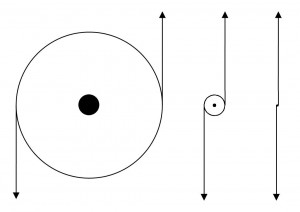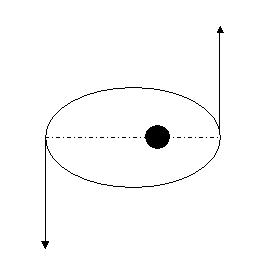 On the way from China to Vancouver workshop, Master Chen has a free day to talk and demonstrate basic principle often misunderstood in Taijiquan. Using “Six Sealing and Four Closing” to show how to split of yin and yang. Presenter: Chen Zhonghua Length: 3 min. In: English Year: 2012 Difficulty:2/5 At:Stanley Park Vancouver, Canada
On the way from China to Vancouver workshop, Master Chen has a free day to talk and demonstrate basic principle often misunderstood in Taijiquan. Using “Six Sealing and Four Closing” to show how to split of yin and yang. Presenter: Chen Zhonghua Length: 3 min. In: English Year: 2012 Difficulty:2/5 At:Stanley Park Vancouver, Canada
Figure 1. |
Figure 2. |

Master Chen says that separation of yin and yang is rotation in today’s terms. He also mentions that stretching is an instance of separation of yin and yang. Today, I came to a realization that when the circle becomes infinitely small, rotation and stretching are really one and the same. The key is that the setup needs 3 points, and one action, which is the rotation, at the centre or the pivoting point or the fixed point. The rotation at the centre is the only thing I can do to ensure that the other 2 points are opposites but of the exact same size. For example, if I just move the hands in opposite directions, since there is no relationship between them (no 3rd point linking the two together), there is no guarantee that their actions are the same in size. At the beginning, I can visualize how the dantian acts the centre and modulates the other 2 points (hand and foot). Hopefully in the future, I can place the centre/fixed point anywhere inside or outside of the body as desired like Master Chen said.
In order to materialize this theory in practice, more training in foundation and yilu will be the way to go.
http://practicalmethod.com/2012/10/yin-yang-split-online-video-trailer/



{ 4 comments… read them below or add one }
Thank you for making these mini-mini lessons Master Chen. I’m finding them very helpful. I remember a few months back you posted a video about having multiple vertical axis simultaneously and had thought it referred to a stabilizing axis and a functional axis as you detail in the “Two Sticks in the Body 2” video. Where that may be true, this video makes me wonder, as I practice this action, that if the shoulder/ Kua line is one axis and we are viewing the body as two rotating cylinders, (the torso being one and the arm being on another) as those two circles rotate do they have central axis’ that must not move as well? And also, is the torso cylinder active rotating backward, causing the arm cylinder to rotate (passive), like a drive gear turning a slave gear ? Wasn’t sure if this related to the multiple vertical axis’ or whether I’m thinking too much and not focusing on the right things. I’m very much looking forward to finally meeting you in a couple of weeks in Phoenix. I couldn’t be more excited!
You are right. I just want to point out a few things without directly answering you.
1) front Kua and shoulder vertical axis is not really an axis. It is the joining border line between the two gears you described above (arm circle and body circle).
2) in a two disk gear, there is a driving gear and a passive gear. This is another aspect of yin yang separation and it is also called “indirect power”.
Thank you. This lesson really helped to bring things into focus for me.
Another superb breakdown by Master Chen on the function of rotation in Yin/Yang separation and the need for the vertical line to be ever present.